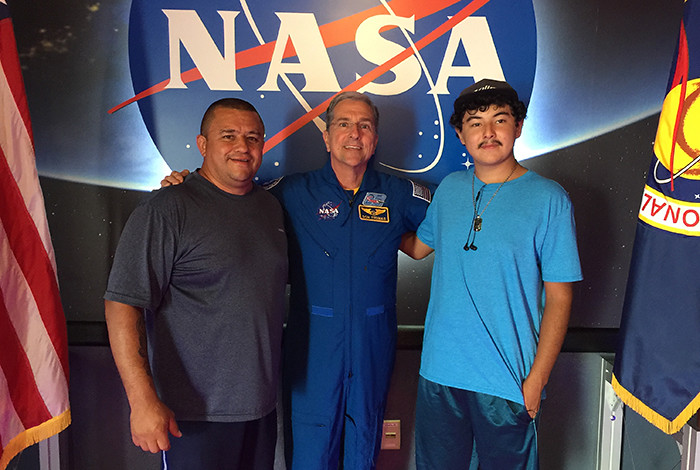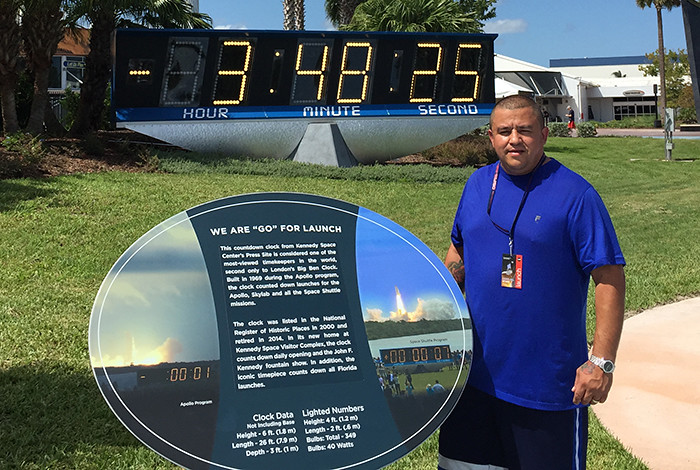NASA training benefits Española youth

Ben Sandoval, director of the Española YMCA Teen Center, and his son were excited to speak with an astronaut during their visit to the Kennedy Space Center.
In July, Española YMCA Teen Center Director Ben Sandoval filled out an application for a two-day training and development program on lunar and planetary science hosted by NASA. “NASA recognizes that the Y has champions across the country who are teaching youth about robotics and lunar and planetary science,” he says. “A callout was made through the YMCA’s corporate headquarters, which was then distributed to Ys that are known to have active STEM initiatives.”
Only 40 of the 250-plus applicants were chosen to attend the course, which was titled “Exploring the Solar System Professional Development Training.” Sandoval was among the few chosen applicants. On September 5, he traveled to Florida with his oldest son and roboticist, Benjamin.
In addition to the training, “we visited every attraction within the Kennedy Space Center Visitor Complex—this took two days to complete in itself,” Sandoval says. “We received a private bus tour of the Cape Canaveral launch facility that included past and present launch pads and a detailed orientation of the NASA facilities and their individual roles in the launch process.”
The highlight of the trip, however, was participating in the launch of OSIRIS-REx, a spacecraft now on a seven-year, sample-return mission from the meteorite Bennu.

Benjamin Sandoval was shocked by the high speeds that spacecraft attain. “Being a racing fanatic, he never thought that Mach 25 was possible for anything to travel at,” says his father.
According to Sandoval, his son’s biggest takeaway was understanding NASA’s role in science exploration, including how long a mission actually takes. “He was astounded by how many planning years went into making this mission possible and also how many years the mission will be active even after the launch,” he says.
The Sandovals returned to New Mexico on September 10 and are already working hard to bring their newfound knowledge and ideas to the Española Teen Center. “We have already completed three separate presentations to teens and elementary-aged youth, with a total outreach of 185 students since our return,” says Sandoval, noting that community outreach and reports back to NASA on such efforts are among the deliverables he agreed to when he accepted the training.
“Next steps are to educate our local community and the youth about the importance of gaining knowledge of lunar and planetary science and the role NASA has in helping us learn about our past, teaching the kids of today, and inspiring young people to become scientists and maybe even astronauts,” Sandoval says. “We received some awesome training and teaching material that we will utilize to educate local youth.”

The countdown timer at the Kennedy Space Center shows the time remaining to the next scheduled launch—in this case, the launch of OSIRIS-REx on September 8.






